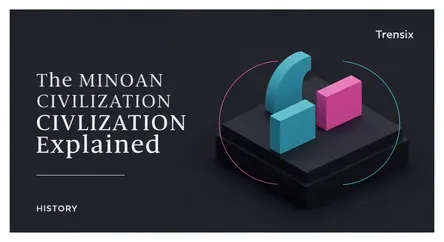History
The Minoan Civilization Explained

Discover the Minoan civilization of Crete, Europe's first major Bronze Age society, known for its grand palaces, art, and mysterious decline.
What is it?
The Minoan civilization was a flourishing Bronze Age culture centered on the island of Crete from approximately 3000 to 1100 BCE. Often regarded as Europe's first high civilization, it was named after the legendary King Minos. The Minoans are renowned for their massive, labyrinthine palace complexes, most famously at Knossos, which served as administrative, religious, and economic hubs. They were a maritime trading power, with their influence reaching across the Aegean and Eastern Mediterranean. Their culture is distinguished by vibrant frescoes depicting scenes of nature and ritual, sophisticated pottery, and an undeciphered writing system known as Linear A.
Why is it trending?
The Minoans continue to capture modern imagination due to their mysterious and abrupt decline around 1450 BCE, often attributed to the catastrophic volcanic eruption of Thera or invasion by the Mycenaeans. Enduring Greek myths, such as the tale of the Minotaur and the Labyrinth at Knossos, ensure the civilization's place in popular culture. Ongoing archaeological work constantly uncovers new artifacts, offering fresh insights into their advanced society. Furthermore, their unique art and the apparently prominent role of women and goddesses in their religion fascinate historians and the public alike.
How does it affect people?
The Minoan civilization made significant contributions to the development of Western culture, laying a crucial foundation for the subsequent Mycenaean and Classical Greek societies. Their innovations in art, architecture, and maritime trade profoundly influenced the entire Aegean region. Today, the impressive ruins of Minoan palaces are major tourist attractions in Crete, driving the local economy. The Minoans' legacy persists through their art and mythology, providing a window into the dawn of European civilization and continuing to inspire artists, historians, and travelers.